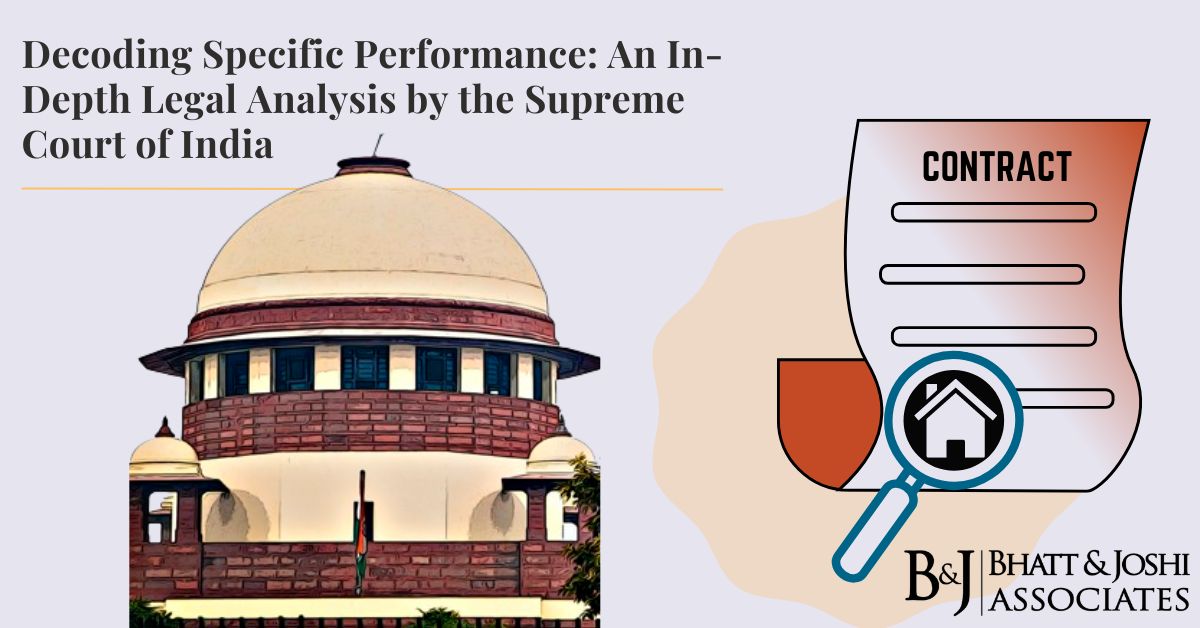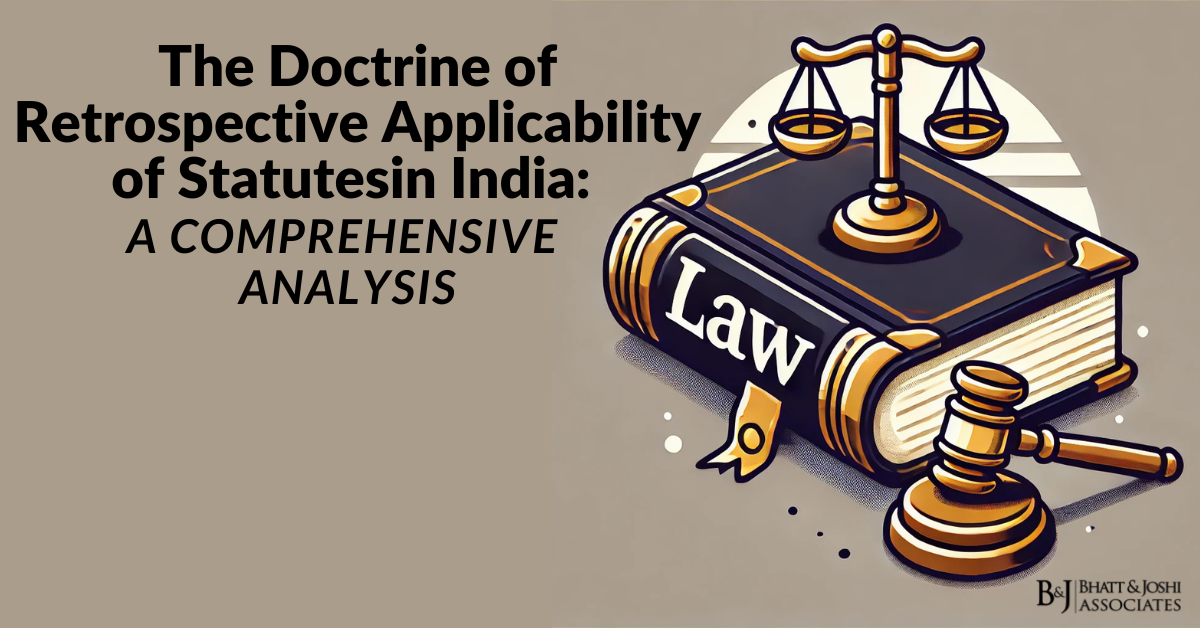Introduction
In the domain of contract law, the application of specific performance as a remedy has been a focal point of examination, discourse, and judicial elucidation. The Supreme Court of India, in a landmark pronouncement involving Major Gen. Darshan Singh (D) By Lrs. & Anr. vs. Brij Bhushan Chaudhary (D) by Lrs., provides a profound exploration of the intricacies and subtleties entwined with enforcing specific performance in property transactions. This article breaks down the verdict to underscore the legal principles, the parties’ conduct, and the ramifications of the court’s determination.
Grasping Specific Performance
Specific performance, as a legal recourse, mandates a party to fulfill a contract precisely according to its terms. It becomes particularly relevant in scenarios where monetary compensation falls short in rectifying the grievances of the affected party, especially in dealings involving unique assets such as real estate. In India, the conditions for granting specific performance are governed by the Specific Relief Act, 1963, emphasizing the discretionary authority of courts based on the parties’ conduct and the specifics of each case.
Overview of the Case: Analyzing Specific Performance in Property Transactions
The Scenario
The controversy emanates from an agreement for the sale of a plot of land with a standing structure in Chandigarh, dated 16th January 1980, between the plaintiff, Major General (retd) Darshan Singh, and the defendant, Brij Bhushan Chaudhary. Following negotiations, a revised consideration was settled, and a draft sale deed was executed. The plaintiffs claimed possession of the property, having purchased stamp papers for the sale deed. Nonetheless, the defendant reneged on the sale agreement, leading the plaintiffs to initiate legal action for specific performance or, alternatively, damages.
Legal Quandaries and Inquiries
The case presented numerous legal quandaries, including: • The impact of the defendant’s role as Karta of a Hindu Undivided Family (HUF) on the property transaction. • The behavior of the plaintiffs, especially in making inaccurate statements in their pleadings. • The application of Sections 16(c) and 20 of the Specific Relief Act, 1963, which address the plaintiff’s readiness and willingness and the discretionary nature of specific performance, respectively.
Judicial Scrutiny and Decrees
Supreme Court’s Insights
The Supreme Court meticulously scrutinized the factual backdrop, presentations, and legal statutes. It emphasized the discretionary facet of specific performance as outlined in Section 20 of the Specific Relief Act, 1963, underscoring the significance of the plaintiff’s comportment in seeking equitable redress. The court pointed out disparities in the plaintiffs’ claims regarding possession and agreement terms, significantly impacting their credibility and entitlement to specific performance.
Legal Statutes Explored
The judgment delved into various legal provisions and tenets: • Specific Relief Act, 1963: Sections 16(c) and 20 underwent critical analysis, focusing on the plaintiff’s readiness and willingness and the court’s discretion in granting specific performance. • Property’s Legal Status: The case addressed the implications of the property being HUF property under the Capital of Punjab (Development and Regulation) Act, 1952, affecting the feasibility of partition and sale.
The Conclusive Decision
Concluding on principles of equity and weighing the plaintiffs’ conduct, the Supreme Court opted against granting specific performance. Nevertheless, it adjusted the Trial Court’s decree on damages, introducing an interest component, thereby partially allowing the appeal.
Equity and Deportment in Specific Performance of Property Transactions: An Epilogue
This verdict underscores the pivotal role of the plaintiff’s demeanor in pursuing specific performance, an equitable remedy. It serves as a cautionary narrative for parties embroiled in contractual disputes, emphasizing the importance of honesty and integrity in their dealings and assertions. Furthermore, it highlights the nuanced approach of the judiciary in harmonizing parties’ interests while upholding justice and equity. As legal practitioners and scholars dissect this judgment, it contributes to the evolving jurisprudence surrounding specific performance in Indian law, providing valuable insights into the intricate interplay between law, equity, and human conduct.














